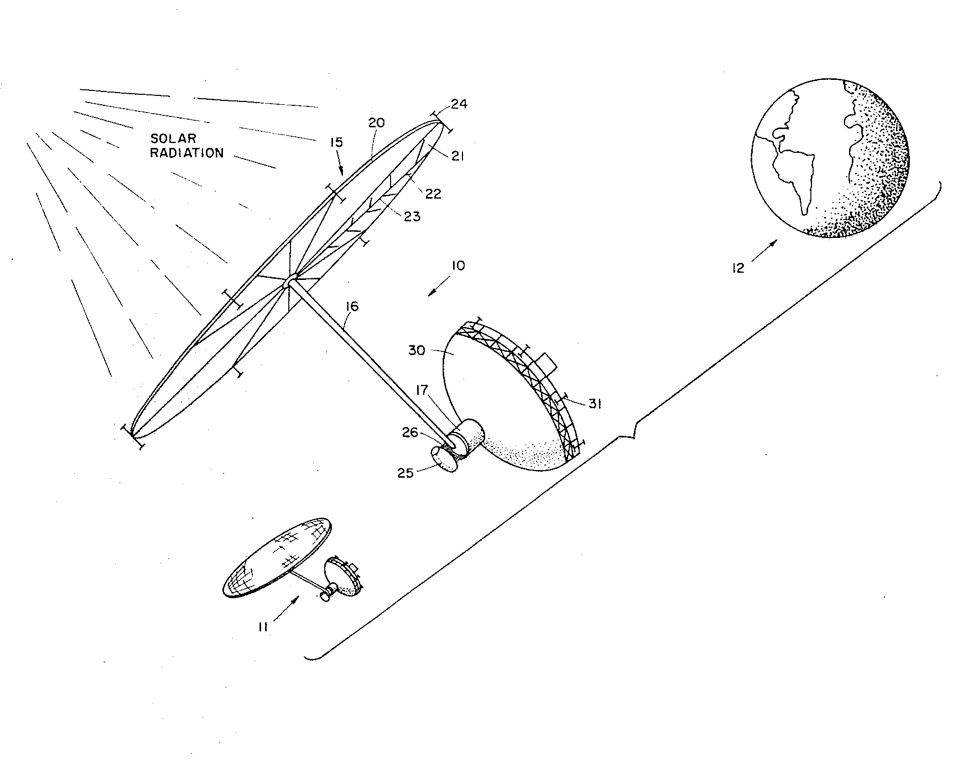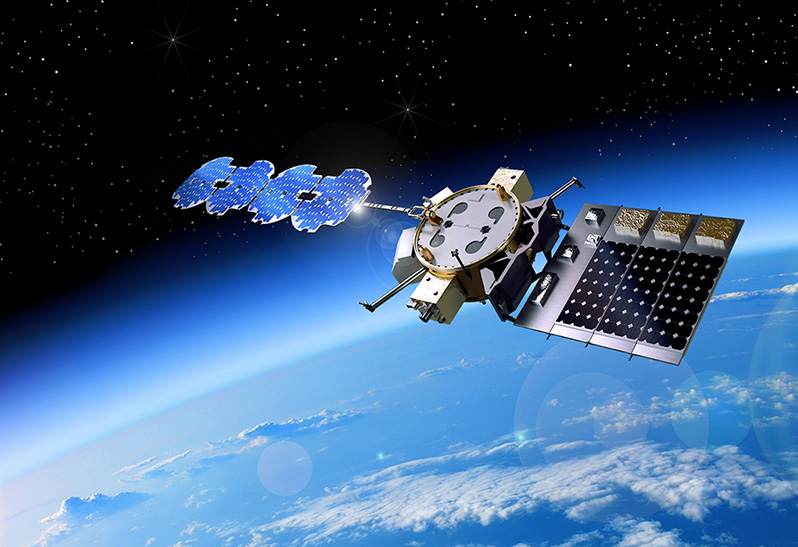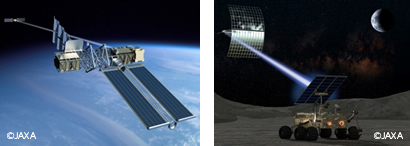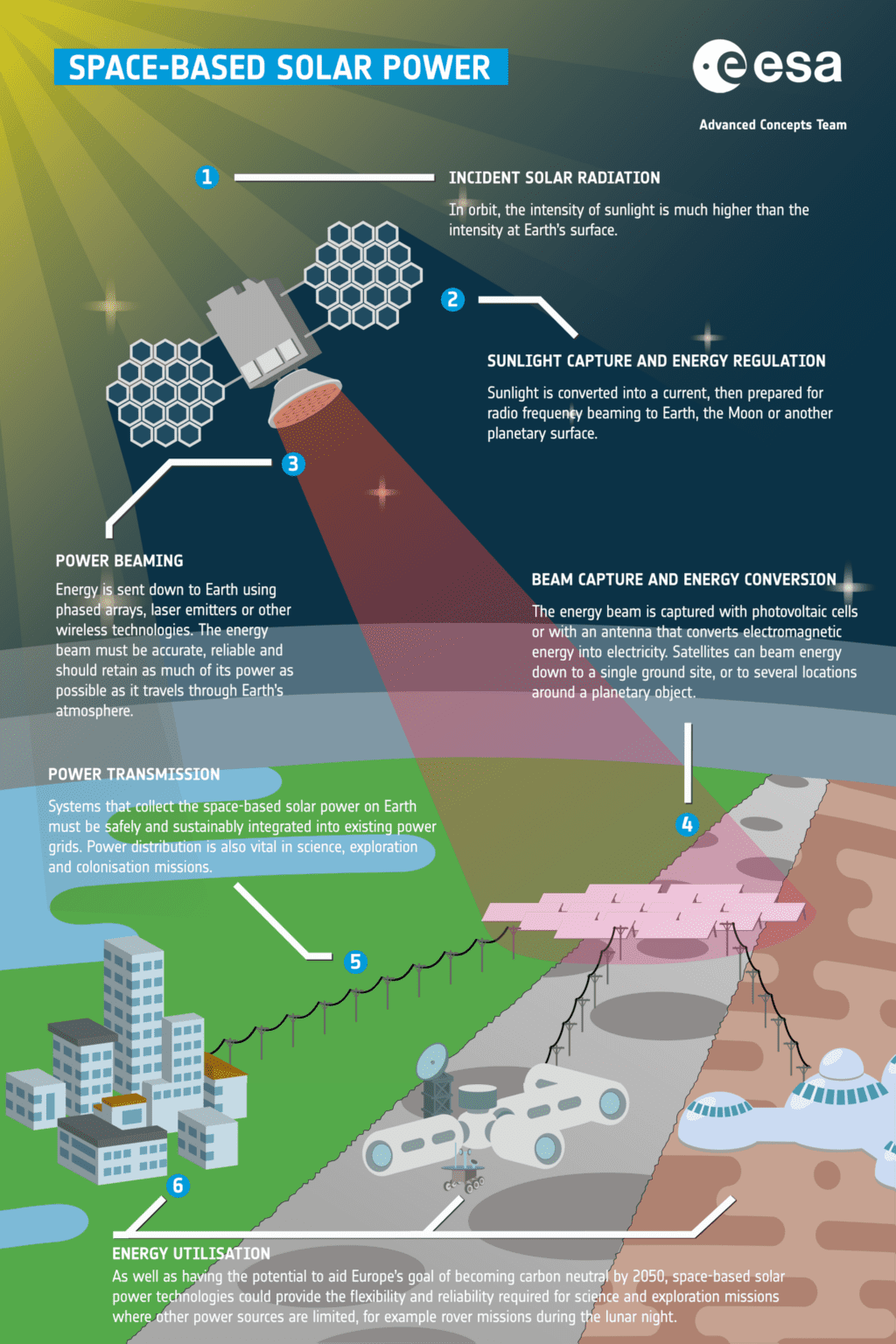Solar energy from space
In space, the sun shines day and night, no clouds to dim the light. We could generate energy around the clock with photovoltaics there. Will we soon be obtaining our electricity from orbit?
 US-Patentamt
US-PatentamtThe idea has been in circulation as an engineering concept since 1967. Researchers around the world have been in agreement on how this would work since the early 2000s: PV cells on a supporting structure capture light from the sun and convert it into electrical energy. This is converted into microwave energy for transportation and sent to Earth, where a receiver module turns the microwave energy back into electrical energy for feeding into the utility grid.
An intriguing vision
Solar power from orbit opens up the possibility of meeting the increasing demand for energy without taking up much land, which would also be suitable for food production and housing for the still growing world population. After all, there are practically unlimited amounts of room out there.
However, a few not insignificant questions are yet to be answered: First of all, how will the extensive technology get into space? Second, will we manage to get it assembled there? And third, will the transmission of the energy generated – tested in microcosm on Earth – also work over a distance of 36,000 kilometers? This is why Elon Musk discarded the topic of solar energy from space ten years ago, labeling it “the stupidest thing ever.”
However, the fact that first demonstrations are ongoing, including in space, the topic is on the agenda of national universities and international institutions indicates that it may no longer just belong to science fiction.
SOLARIS – Europe’s energy supply from space
Leopold Summerer leads ESA’s Advanced Concepts and Studies Office, which includes its Advanced Concepts Team. This multidisciplinary think tank explores innovative concepts with long-term implications for space travel. It is clear from his own first encounter with the topic just how long energy generation in space has already been circulating on the scientific scene: “The first time I read about the concept was when I was studying physics at university,” said Summerer. “The first time I can remember it being discussed from an engineering perspective was in 1999 at a course organized by the International Space University. In the early 2000s, I began conducting research on the concept as a post-doctoral researcher.”
For Leopold Summerer, solar energy from space is highly relevant for one obvious reason: “Climate change! If this concept can cost-effectively help us transition to a CO2-neutral energy system, then we have to develop the key technologies involved.”
And one initiative from the ESA called SOLARIS aims to do exactly that. In November 2022, it was approved as part of ESA’s General Support Technology Programme to enable an assessment of the technical feasibility, benefits, opportunities and risks of solar energy from space: What contribution can it make to bringing about a clean energy supply by 2050?
Raising awareness among European electric utility companies, among national governments and at the European Commission; establishing opportunities for cooperation with other countries; environmental, health-related and security issues; as well as approaches to regulation and international coordination of space policy are all on the to-do list for SOLARIS.
ESA video on the SOLARIS program
Leopold Summerer: “Our aim is to credibly communicate to decision-makers in 2025 if this concept can cost-effectively help us achieve our goal of zero emissions for 2050.” If the key components of the technology are sufficiently developed by then, “it would justify implementation on an industrial scale,” said Summerer. Here, key components principally mean highly efficient PV cells, wireless energy transmission and robotic assembly in orbit. The next step – coming up soon, in 2025 – would be a comprehensive development program for which SOLARIS will draw up a proposal.
“Space projects are almost inevitably ambitious and challenging. They require us to find new solutions to technical problems that nobody has had to resolve before. In the case of solar energy from space, there is another added level. This idea is so much bigger than anything else we have done in space to date. Scaling the system such that it can be used to produce energy cost-effectively – including construction in space – is very challenging … and exciting.”
Leopold Summerer, Head of the Advanced Concepts team at the ESA
The whole world is conducting research on solar energy from space
“We have continuous, open and highly cooperative exchanges with all the important players around the world who are active in this area,” said Summerer. This was clear to see during a two-day online workshop on space-based solar energy in December 2021 that was organized by the ESA. It saw renowned representatives of this area of research from all over the world come together. The participants included John Mankins, member of the Board of Directors of the National Space Society, who took “A fresh look at space solar power” for NASA back in 1995 and is now more convinced than ever that we will one day obtain our energy from space.
As the costs of materials and transportation fall, efficiency rises and transferable technology advances, space-based solar power is gaining fans all over the world.
Ambitious Plans
In late 2021, the U.S. Air Force Research Laboratory tested a technical element for converting solar energy into high-frequency energy on the ground. Concepts and models for further critical technologies and their integration into a functioning overall system are in progress. With the Arachne mission, a large prototype is expected to be put into orbit in 2025.

PV cell Origami
While the Air Force is hoping to secure strategic benefits for the U.S. armed forces from extraterrestrial energy generation, the California Institute of Technology (CalTech) is working on a primarily peaceful mission with its Space Solar Power Project. The CalTech researchers from the areas of materials science, electrical engineering and aeronautical engineering are developing components made from ultralight materials that can be folded for transportation – they want to send an initial prototype of their system into space in the near future.
Researchers from the CalTech Space Solar Power Project explain their approach in a video .
A kingdom for solar energy from space
The British Space Energy Initiative (SEI) is also pursuing a tight schedule with numerous players from the worlds of politics, research and business. By 2030, they want to have established the first solar energy demonstration system in orbit. Solar power satellites are expected to provide a significant proportion of the United Kingdom’s energy supply by the mid-2040s.
Japan’s lofty ambitions
Japan says it has been conducting research on solar power from space since the 1980s. In addition to microwaves, the use of laser beams to transmit the energy to Earth is part of the discussion here. The Japan Aerospace Exploration Agency (JAXA), which is now responsible, is expecting a gigawatt power plant to go into operation in the 2030s, although smaller plants could begin circling in orbit earlier than that..

Press reports also state that a project is under way at Xidian University in China to test the transmission of energy with the aid of microwaves.
With all of this activity, we may well find out in the next few years whether an extraterrestrial energy supply will become a reality or whether Elon Musk is proved right. In any case, Summerer from the ESA suspects that the SpaceX multi-entrepreneur is not quite up to date: “In view of the number and variety of his activities, he probably did not have time to fully engage with the subject matter.”
The cost of launching into space is falling rapidly. PV cells are more cost-effective than ever. Can we build power plants in space? The Financial Times ponders this question in a video that is well worth watching.



